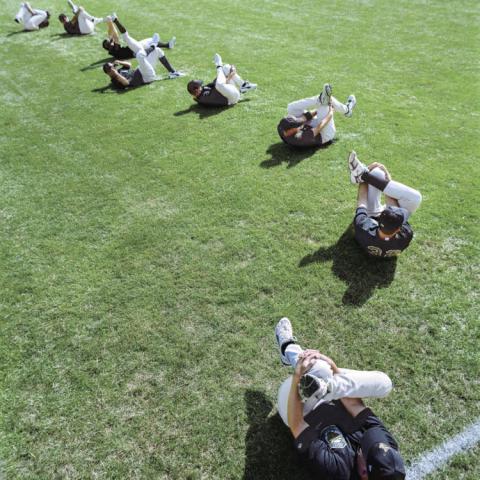The Dream Chasers of Pro Baseball
The New Yorker
By Doug Glanville
April 2, 2017
Professional baseball, in theory, follows a linear narrative: Single-A comes before Double-A, Double-A before Triple-A, and Triple-A before the major leagues. In fact, though, only a minuscule percentage of pro players ever play a single game as a major leaguer. When I joined the minor leagues, as a first-round draft pick for the Chicago Cubs, in 1991, I was aware of these slim chances, but I was also naïve about life beyond my amateur status. My “first rounder” stamp armed me with a certain advantage. First-round picks get the big bonuses soon after signing that first professional contract, and, because they’ve been labelled as having a valuable and necessary set of skills, they have more opportunities to develop, thrive, and learn; being so ordained gave me the most certainty of success that the game can offer—which is never much.
In her photo essay “Fantasy Life,” Tabitha Soren has captured this sense of tentative possibility. For years, she followed the careers of the Oakland Athletics’ 2002 draft class: twenty-one players, all drafted at the same time. A handful made it to the top, like the former New York Yankee Nick Swisher, who enjoyed a twelve-year major-league career, including a World Series title, in 2009; most did not. But in Soren’s pictures all of the men are in the throes of their own baseball fantasy. We see a rite of passage, and it seems like these players—arranged in a tidy pattern as they stretch out on the turf or scattered across the diamond before rows of empty seats—will be rewarded for their time served. This is how I felt during my pro career: it seemed like the ice baths and slumping Aprils, the mosquito-riddled outfields, were all part of our assured destiny.
When I was in the minor leagues, our base-running instructor, Joe Tanner, told me, “You have to give up the best years of your life to play this game.” He was right. To even see a return on investment requires years on the road: buses and middle seats; dozing drivers and bad food; the hazy, record-breaking heat that Soren captures in a picture from 2003; and the weary time in dusty bullpens shown in another shot, from 2014. Along the way, the gods must smile on you with perfect health and impeccable timing, the divine fortune of a job opening becoming available exactly when you are ready to take it. Denial allows many minor leaguers to ignore the possibility—the probability—of falling short, at least until it becomes inescapably clear that they have done so.
And no matter how high you go on this professional journey, it will end on its own timetable. In contrast to the bright greens and crisp uniforms in her game-day pictures, and to the stark black-and-white kinetics of her mid-play shots, Soren’s pictures of players after their baseball careers have wound down show an after-the-fireworks, anticlimactic stillness that could be either peace or resignation. The players are now coaches, students, sales staffers; they pose calmly before Soren’s lens without chasing the next pitch. As for my own career, which went on to include nine years in the major leagues, my own father passed, my mother aged, my brother moved, my hamstring tore; all were accelerants to the stress of the road, to the sense that the dream is no longer a dream but a duty, a default, a place to avoid reality, not conquer it. Even with an engineering degree and a fiancée in tow, I took little comfort in the uncertainty of next.
Therein lies the biggest challenge: that even the best, even those who make it, have an uncomfortable “next”; that the prime of one’s career is just a phase, fleeting. In one black-and-white photo from Soren’s series, the retired pitcher Bill Murphy displays knuckles bejeweled with championship rings. These signs of success seem like artifacts; their flat shine doesn’t compete with the light in other Soren photos: the halos of floodlights or the glare of sun bouncing off the home team’s white uniforms. But to move on we must move past, trading one set of trappings for another and turning that denial we once nourished into acceptance. Even then, we may look at that past and agree with what one “Fantasy Life” subject, Lloyd Turner, told Soren: “I spent too much time fearing I would lose something I loved.”
Republished from The New Yorker.
Photo Credit: Tabitha Soren
Source:
Other





